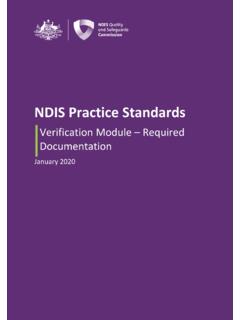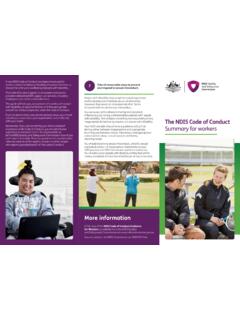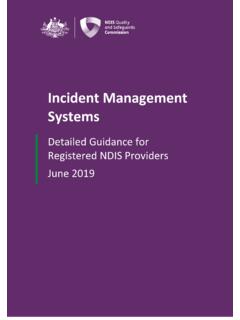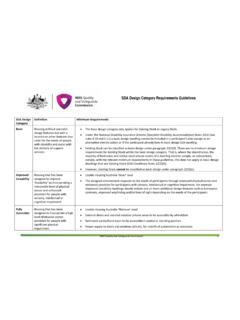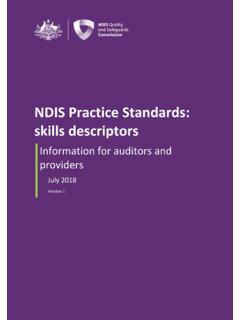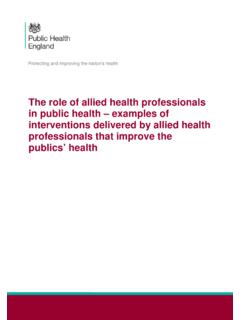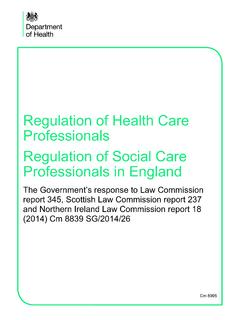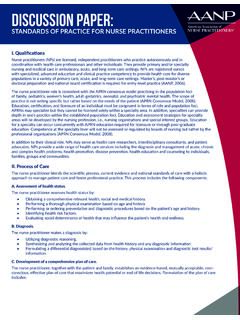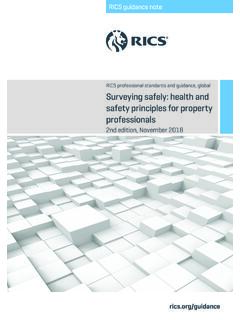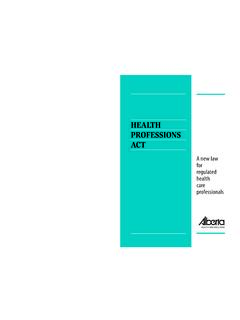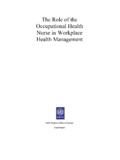Transcription of Regulated Restrictive Practices Guide
1 Regulated Restrictive Practices Guide Chemical restraint Environmental restraint Mechanical restraint Physical restraint Seclusion Version 1, October 2020. NDIS Quality and Safeguards Commission 1. Acknowledgements The Regulated Restrictive Practices Guide was developed by the NDIS Quality and Safeguards Commission in consultation with: People with a lived experience of disability and their families Australian health Practitioner Regulation Agency (AHPRA). o Occupational Therapy Australia (OTA). o Australian Psychological Society (APS).
2 O Australian Physiotherapy Association (APA). Professor Julian Trollor, UNSW Medicine, School of Psychiatry, Department of Developmental Disability Neuropsychiatry. Dr. Dinesh K Arya, Chief Medical Officer, ACT health Directorate, Office of the Chief Psychiatrist (ACT). Australian Government Department of Social Services Policy Branch National Disability Insurance Scheme (NDIS). Representatives of the States and Territories' Departments and the Senior Practitioners Practice Leadership Group including: o ACT Department of Community Services o NSW Department of Communities and Justice o Department of health , Northern Territory Government o QLD Department of Communities, Disability Services and Seniors o Department of Human Services South Australia o Department of Communities Tasmania o Department of health and Human Services Victoria o Department of Communities Western Australia.
3 Suggested Citation NDIS Quality and Safeguards Commission (2020). Regulated Restrictive Practices Guide . Penrith, Australia: NDIS Quality and Safeguards Commission. NDIS Quality and Safeguards Commission 2. Contents Introduction .. 4. Restrictive Practices General information .. 5. Chemical restraint .. 10. Environmental restraint .. 15. Mechanical restraint .. 18. Physical restraint .. 22. Seclusion .. 27. Further information or support .. 31. References .. 31. Appendix A: Restrictive practice protocol Detailing the Restrictive practice in the behaviour support plan.
4 36. Appendix B: Chemical restraint case study .. 37. Appendix C: Chemcial restraint protocol example .. 39. Appendix D: Environmental restraint case study .. 41. Appendix E: Environmental restraint protocol example .. 433. Appendix F: Mechanical restraint case study .. 454. Appendix G: Mechanical restraint protocol example .. 47. Appendix H: Physical restraint case study .. 498. Appendix I: Physical restraint protocol example .. 521. Appendix J: Seclusion case study .. 554. Appendix K: Seclusion protocol example.
5 57. NDIS Quality and Safeguards Commission 3. Introduction Background The NDIS Quality and Safeguards Commission (NDIS Commission) is a Commonwealth agency established to protect and prevent people with disability from experiencing harm arising from poor quality or unsafe supports or services under the National Disability Insurance Scheme (NDIS). This includes monitoring the use of Regulated Restrictive Practices and promoting their reduction and elimination. Purpose of this Guide The purpose of this Guide is to: a) promote the rights and inherent dignity of people with disability.
6 B) assist in identifying each Regulated Restrictive practice;. c) provide practice advice consistent with a positive behaviour support framework, contemporary evidence informed practice, intended to reduce and eliminate the use of Restrictive Practices ; and d) assist registered NDIS providers and NDIS behaviour support practitioners to meet their obligations under the National Disability Insurance Scheme Act 2013 (NDIS Act 2013) and relevant Rules. Scope of the Guide This Guide was developed for registered NDIS providers and NDIS behaviour support practitioners supporting NDIS participants, but it may also be of interest to anyone who supports a person with disability.
7 The Guide supports a contemporary positive behaviour support framework. This Guide explains what a Restrictive practice is, and sets out information on the five types of Regulated Restrictive Practices , being: chemical restraint environmental restraint mechanical restraint physical restraint seclusion. Legislative context This Guide furthers some of the NDIS Quality and Safeguards Commissioner's specific behaviour support function as set out in section 181H of the NDIS Act 2013, relevantly: The Commissioner's behaviour support function is to provide leadership in relation to behaviour support, and in the reduction and elimination of the use of Restrictive Practices , by NDIS providers, including by.
8 (b) developing policy and guidance materials in relation to behaviour supports and the reduction and elimination of the use of Restrictive Practices ;. (c) providing education, training and advice on the use of behaviour supports and the reduction and elimination of the use of Restrictive Practices ;. NDIS Quality and Safeguards Commission 4. (e) undertaking and publishing research to inform the development and evaluation of the use of behaviour supports and to develop strategies to encourage the reduction and elimination of Restrictive Practices by NDIS providers.
9 The NDIS Act 2013 gives effect to Australia's obligations under the Convention of the Right of People with Disabilities (CRPD). The CRPD is the first binding international human rights treaty to recognise the rights of all people with disability. Australia signed the CRPD in 2008. The NDIS Commission is committed to promoting, protecting and ensuring the full and equal enjoyment of all human rights and fundamental freedoms by people with disability and promoting respect for their inherent dignity. Restrictive Practices General information What is a Restrictive practice?
10 Section 9 of the NDIS Act 2013 defines a Restrictive practice as any practice or intervention that has the effect of restricting the rights or freedom of movement of a person with disability'. Under the National Disability Insurance Scheme ( Restrictive Practices and Behaviour Support) Rules 2018, there are five Restrictive Practices that are subject to regulation and oversight by the NDIS Commission. These are chemical restraint, mechanical restraint, physical restraint, environmental restraint and seclusion.


